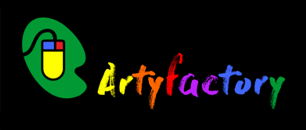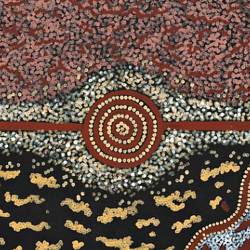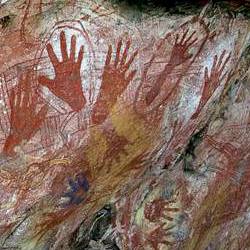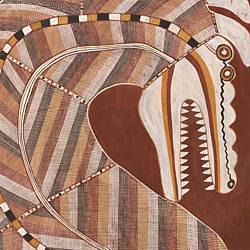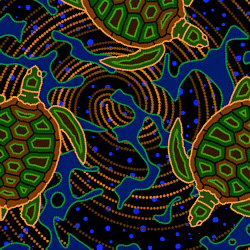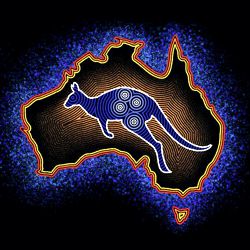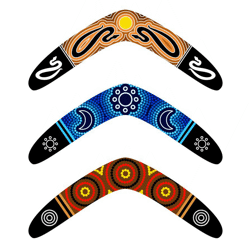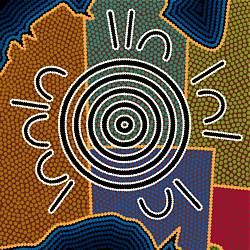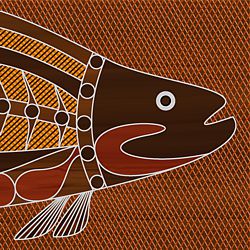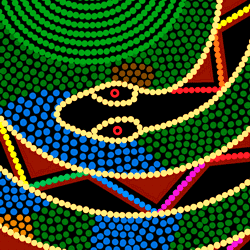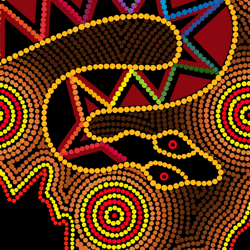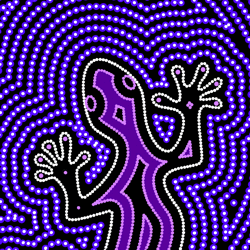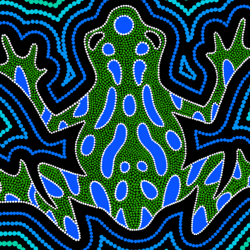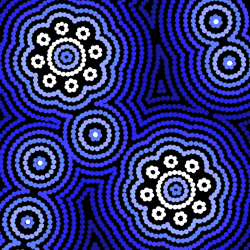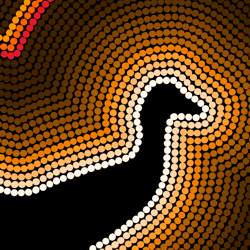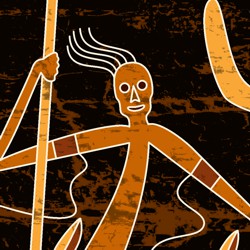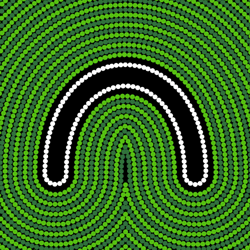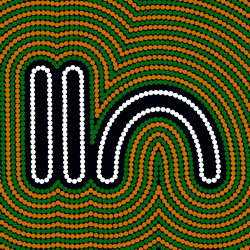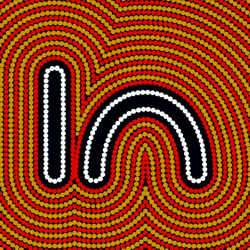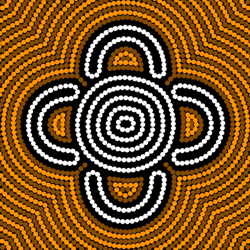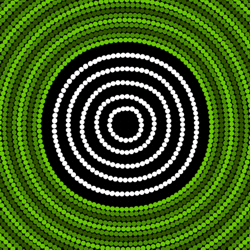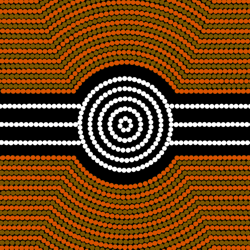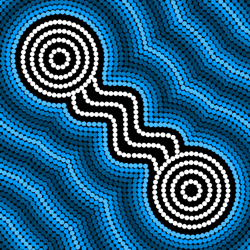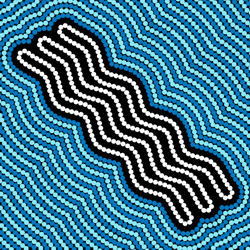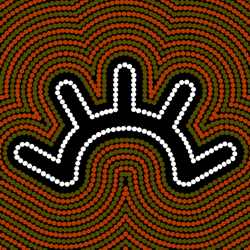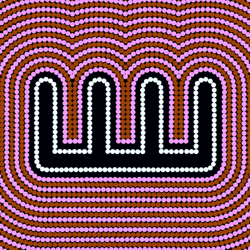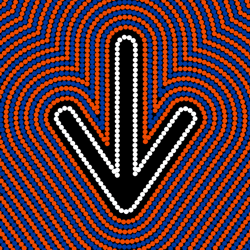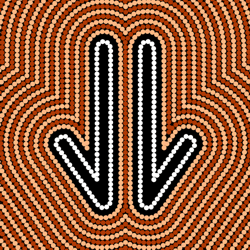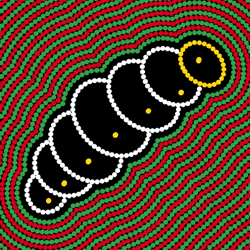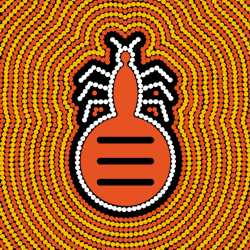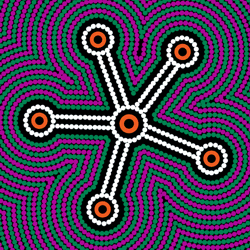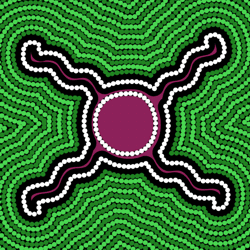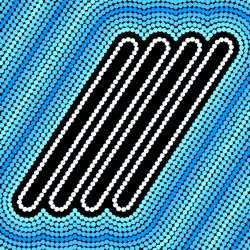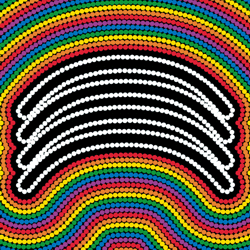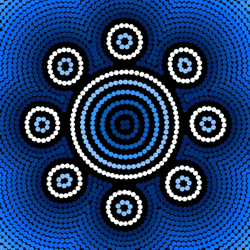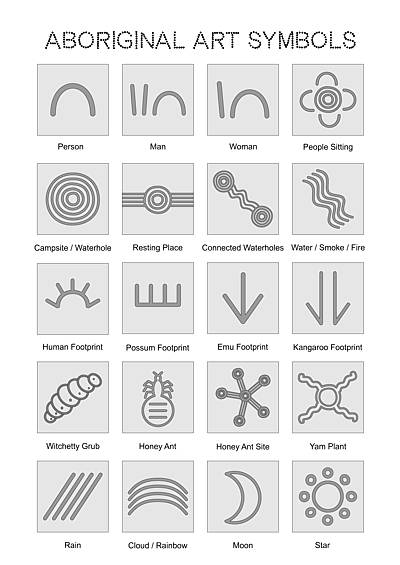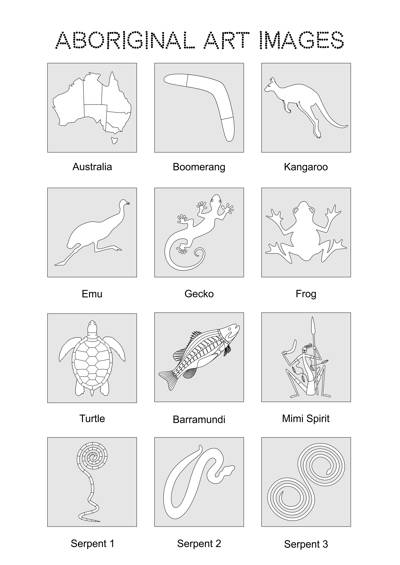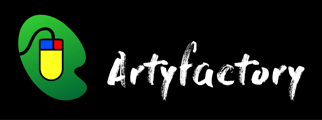Aboriginal Art Lessons
In our Aboriginal Art Lessons we learn how to create artworks inspired by the symbols, styles and stories of this enduring Australian art form.
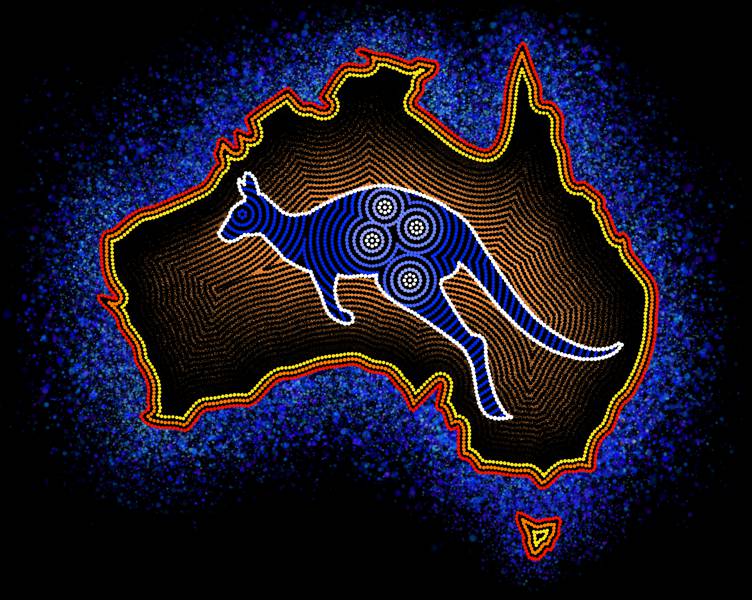
In our Aboriginal Art Lessons we learn about the symbols, styles and stories of this enduring Australian art form and use that knowledge to create our own drawings and paintings.
-
Symbols and Images: For thousands of years, indigenous Australian artists have used a visual vocabulary of symbols and images to communicate information about their customs and culture. To help you with your Aboriginal inspired artworks, we supply free clip art sheets of the more common symbols and images used in Aboriginal art.
-
Styles and Techniques: Indigenous Australian art has evolved from its early rock art and bark paintings, through its traditional x-ray style to the distinctive contemporary dot paintings in acrylic paint on canvas.
-
Dreaming Stories: These are the creation stories of the Aboriginal people. Each of the stories we feature is illustrated by one of our paintings that represents an aspect of its theme.
The symbols and images used to create our lessons can be found in our menu below. They are available for you to download to help with creating your own artworks.
Aboriginal Art Lesson 1 - Hand Stencil Designs
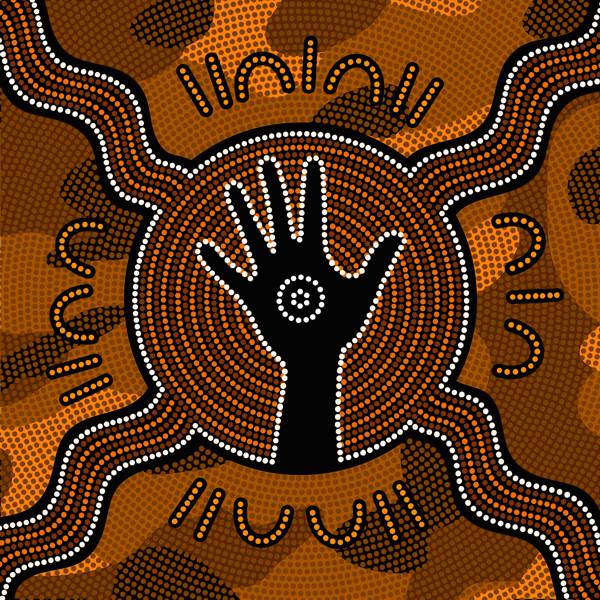
Our first lesson explores the use of Aboriginal hand stencils as the subject for a painting.
-
Hand stencils are the earliest and most personal symbols that we see in Aboriginal rock art sites.
-
They are a primal way of marking territory and their individuality is often emphasized by framing them within a circle.
-
They are either printed by painting the hand with pigment and pressing it onto the rock surface, or stencilled by placing the hand on the rock surface and spraying pigment around it.
-
Our lesson links the individual (the hand) to the group (the camp) in a gesture that acknowledges value of both.
Aboriginal Art Lesson 2 - Boomerang Designs
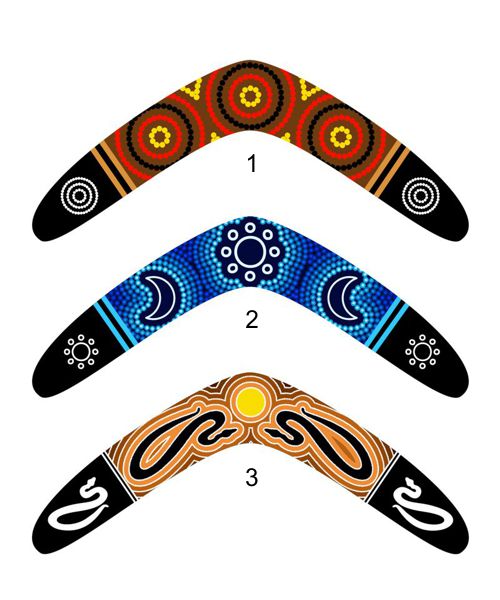
Our second lesson uses traditional symbols and images to create decorative designs for Aboriginal boomerangs.
-
Boomerangs are aerodynamic L-shaped throwing stick traditionally used by indigenous Australians.
-
They were originally used as weapons for hunting, combat, or as percussive instruments in tribal celebrations.
-
Today they are mostly used for sport in throwing competitions, for ceremonial purposes, and as art objects for display.
-
The boomerang has become an icon of Australian identity.
Aboriginal Art Lesson 3 - Dot Painting
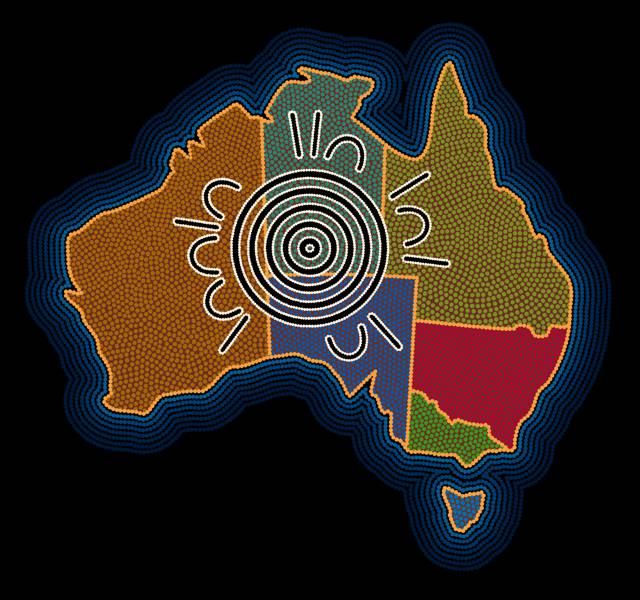
Our third lesson uses traditional symbols and images to explore Aboriginal dot painting techniques.
-
'Dot painting' is a contemporary form of indigenous Australian art developed by the Papunya Tula artists.
-
Although Aboriginal ‘dot painting’ is a relatively modern phenomenon, it has its roots in the traditional dotted designs derived from body art and sand drawings.
Aboriginal Art Lesson 4 - X-Ray Art
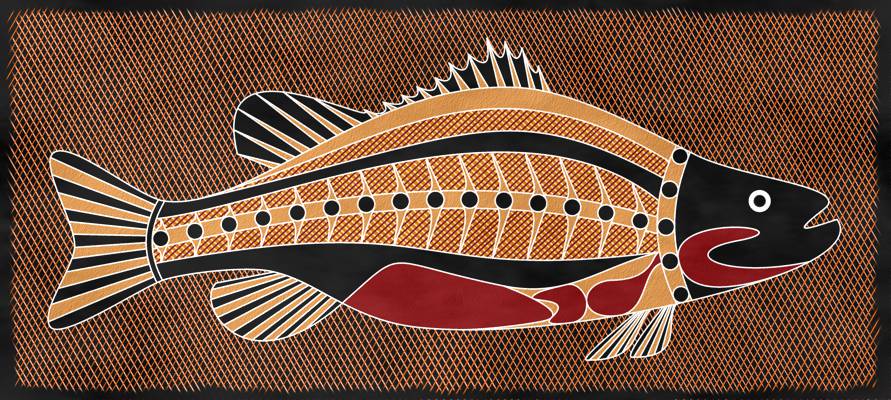
Our fourth lesson uses indigenous symbols and images to explore the 'rarrk' cross hatching technique, a traditional bark painting style commonly known as Aboriginal 'X-Ray' art.
-
The Aboriginal people are ethical hunters who do not waste any part of their prey.
-
X-Ray art is an educational mode of painting that breaks down the subject’s anatomy into sections that illustrate the useful parts of the animal.
The Painting Process for our Page Illustration
Many of the topics in our Aboriginal Art pages are illustrated with a painting that was inspired by the theme of that page. For each of these we have created a step by step slide show that deconstructs the image to reveal the painting process and inspire possibilities for your own ideas. The images and symbols used to create our illustrations can be found in our menu at the foot of the page. They are available for you to download to help with creating your own artworks.
- aboriginal-art-10
Aboriginal Dot Painting
- aboriginal-art-2
1. A map of Australia is outlined with a white color pencil on a black ground.
- aboriginal-art-3
2. The outline of a kangaroo is drawn in the center of the map.
- aboriginal-art-4
3. The kangaroo is masked, and a golden ochre background sprayed around it.
- aboriginal-art-5
4. The map is masked, and a speckled blue ocean stippled around it.
- aboriginal-art-6
5. The Southern Cross is painted within in the kangaroo using white Aboriginal star symbols.
- aboriginal-art-7
6. The kangaroo is filled in with graduated lines of dots to suggest the stars' radiance.
- aboriginal-art-8
7. The kangaroo is outlined with white dots.
- aboriginal-art-9
8.The map of Australia is outlined with colored dots relating to the Aboriginal flag.
- aboriginal-art-10
9. The ochre background is painted with concentric rows of black dots to suggest an Aboriginal fingerprint on the land.

(Click on the play buttons or swipe back and forward to explore each stage of our painting.)
Key Stages of the Painting
-
A map of Australia is outlined with a white color pencil on a black ground.
-
The outline of a kangaroo is drawn in the center of the map.
-
The kangaroo is masked and a golden ochre background sprayed around it.
-
The map is masked and a speckled blue ocean stippled around it.
-
The Southern Cross is painted within in the kangaroo using white Aboriginal star symbols.
-
The kangaroo is filled in with graduated lines of dots to suggest the stars' radiance.
-
The kangaroo is outlined with white dots.
-
The map of Australia is outlined with colored dots relating to the Aboriginal flag.
-
The ochre background is painted with concentric rows of black dots to suggest an Aboriginal fingerprint on the land.
